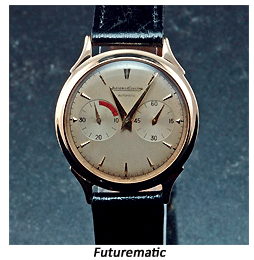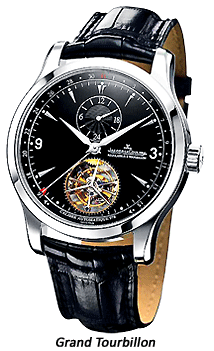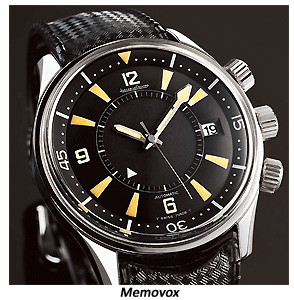- Prelude
- Editorial
- 'Public Sculptures are the Public's own Consciousness'
- Stimulating Thoughts
- Sculptural Traditions and Contemporary Art Practices
- Sculpting out a Third Dimension from Madhya Pradesh
- About Nostalgic Dragonflies and Homes in the Bags: Sculptural Snapshots from the North-East
- A Concise Chronicle of Bengal's Modern Sculpture
- Neo-sculptural Identity: Six Young Sculptors
- From Object to Experience: Notes on American Sculpture
- In the Domain of Drama Sculptures of S.Nandagopal
- Satish Gujral : Sculpting the Inner Form
- Transformation of Articulations: Mrinalini Mukherjee
- The Experiential Quotient in the Sculptures of Ravinder Reddy
- Shresta Rit Premnath A Passion for Structure
- The Anatomy of Melancholy: Sculptures of Rajesh P Subramanium
- A Crusader of/for Site Specific Public Art: Subodh Kerkar
- Installation Practices in and around Santiniketan
- A Wall is a Screen: A Promenade Film Street Performance
- Jaeger-LeCoultre An Overview
- Regency Style: Regency Furniture
- Designing the Streetscapes: Visual Elements of Pedestrian Corridors
- Sculpture Rules It All
- The Triumph of the Eternal
- Artist Index and Statistics- Anish Kapoor
- Auction Reports
- Musings from Chennai
- Art Bengaluru
- Art Events Kolkata: October-November 2010
- Mumbai Art Sighting
- An Evening of Interaction
- 6th Asian Museum Curators' Conference
- Swedish Art in India
- Couple of Difference : Recent sculptures of Karl Antao
- Previews
- In the News
- Sotheby's : Important Watches Geneva
ART news & views
Jaeger-LeCoultre An Overview
Volume: 3 Issue No: 11 Month: 12 Year: 2010
by Anurima Sen
It was at the height of the Art Deco movement in the 1930s that Jaeger-LeCoultre rose to fame. British officers, stationed in India, were annoyed by the fact that their wrist watches could not be worn during their polo matches. Watches in those days could hardly sustain the rigors of the game, and were easily damaged. Jaeger-LeCoultre came up with the visionary idea of making a watch with reversible casing which would ensure the safety of the dial, in other words, they devised a watch whose case flipped over in order to protect the fragile movement.  This was the birth of the Reverso, the watch that earned Jaeger-LeCoultre international fame and till date remains one of their top selling models.
This was the birth of the Reverso, the watch that earned Jaeger-LeCoultre international fame and till date remains one of their top selling models.
Founded by Charles Antoine-LeCoultre, an inventor known for his precision and perfection, originality and practicality, in the year 1833, Jaeger-LeCoultre has continued producing stylish timepieces of the highest quality for the past 177 years. The first workshop was set up in the village of Le Sentìer in the Vallée de Joux, following the invention of a machine to produce watch-making pinions. Instead of relocating from this initial site, the brand has chosen to stay true to their geographical roots. As the brand website states that Jaeger-LeCoultre's thirst for challenging inventions stems from the approach of the people of the Vallée de Joux who were virtually “cut off from the wider world during endless winters and with a little iron from the local mines, along with plenty of time, intelligence and manual dexterity, the inhabitants… have always had to invent in order to survive.” Antoine LeCoultre is widely credited for bringing about the union of machines and manual dexterity- in 1847 he created the watch with keyless winding and in 1866 he installed a steam-driven machine to operate the many tools involved in making watches.
It was in 1903 that Jacques-David LeCoultre, Antoine's grandson, met the Parisian Edmond Jaeger, a French marine chronometer marker. They co-operated on the task of producing ultra thin calibers that Jaeger had invented. Jaeger worked devotedly for the firm for twenty years and was taken into partnership in the year 1937. It was Jaeger's influence that lent the watch the aesthetics that it reflects till date, echoing its inner sophistication and beauty.  The Art Deco movement and the post World War II boom period led to the extensive production of watches for men of action, for men who were almost always on the move- and Jaeger-LeCoultre effectively combined both functionality and durability in creating them. After the Reverso, came the Futurematic in 1946, a watch without a winding crown. The Memovox line was launched next, it sported the world's first automatic alarm watch. The Polaris line appeared in 1965, followed by the Geophysics and Geomatic chronographs. In the seventies however, the German firm VDO took over Jaeger-LeCoultre. Embracing an ideal of constant and sustained innovation to produce pioneering timepieces that reflect its deep commitment to the spirit of timekeeping, Jaeger-LeCoultre boasts of over 350 patented inventions. Each of these innovations have been instrumental in radically shaping and accentuating a definitive roadmap for Swiss watch-making history, including innovations pertaining to cases, dials, bracelets and watch movement.
The Art Deco movement and the post World War II boom period led to the extensive production of watches for men of action, for men who were almost always on the move- and Jaeger-LeCoultre effectively combined both functionality and durability in creating them. After the Reverso, came the Futurematic in 1946, a watch without a winding crown. The Memovox line was launched next, it sported the world's first automatic alarm watch. The Polaris line appeared in 1965, followed by the Geophysics and Geomatic chronographs. In the seventies however, the German firm VDO took over Jaeger-LeCoultre. Embracing an ideal of constant and sustained innovation to produce pioneering timepieces that reflect its deep commitment to the spirit of timekeeping, Jaeger-LeCoultre boasts of over 350 patented inventions. Each of these innovations have been instrumental in radically shaping and accentuating a definitive roadmap for Swiss watch-making history, including innovations pertaining to cases, dials, bracelets and watch movement.
Never the one to blindly follow trends, Jaeger-LeCoultre has always distanced themselves from compromises in precision and exclusivity for the sake of conformist designs. In 1981, the firm came out with another sterling creation, the Jaeger-LeCoultre Calibre 606, a date-display watch that won rave reviews on its launch. Jaeger-LeCoultre made history when the Jaeger-LeCoultre Calibre 601 earned the distinction of being the world's thinnest watch, with a depth of a mere 1.8 mm, having a diameter of 11.7 mm. In 1982, Jaeger-LeCoultre broke its own records with the model Calibre 608, which has an amazing 1.6 mm thickness.  By the later half of the twentieth century, Jaeger-LeCoultre was surging ahead of competition in the Quartz innovations, and yet its genius manifested in multiple disciplines of watch-making. The Jaeger-LeCoultre Calibre 889 is a sterling example of Jaeger-LeCoultre experimenting with ground-breaking design and functionality. A high-frequency automatic model, the Calibre 889 boasts of a premier jumping date display, a movement that shall go on to form the calibrated core of a model that successfully endures the challenges of the Master 1000 Hours Test.
By the later half of the twentieth century, Jaeger-LeCoultre was surging ahead of competition in the Quartz innovations, and yet its genius manifested in multiple disciplines of watch-making. The Jaeger-LeCoultre Calibre 889 is a sterling example of Jaeger-LeCoultre experimenting with ground-breaking design and functionality. A high-frequency automatic model, the Calibre 889 boasts of a premier jumping date display, a movement that shall go on to form the calibrated core of a model that successfully endures the challenges of the Master 1000 Hours Test.
The new decision-makers at Jaeger-LeCoultre, the German VDO, carried forward the legacies of Jaeger-LeCoultre, producing watches that catered to a wide gamut of exclusive clientele, as well as specialized watches for niche segments like swimming and sports. Henri-Jean Belmont was handed the task of weeding out the unprofitable lines from Jaeger-LeCoultre's stable, in order to concentrate solely on high-quality watches. This resulted in the surfacing of two basic lines: the Master series and the Reverso series. The names that occur foremost to the mind at the mention of the Master series are the Grande Taille, known for its fast beat automatic movement, the Master Lady and Master-Slim with their eternal and classic 1950s look and the Master Réveil.  This watch also goes by the name of the Master Grand Réveil, or simply the Grand Réveil - and it was the result of parallel innovations and experimentation with design, functionality and form at Jaeger-LeCoultre. This watch represents the apices of quality watch-making of the finest standards. With the Grand Réveil, the traditional Memovox Calibres reached a quintessential crescendo of precision, with the watch containing a large complication within the limited form of the conventional wristwatch. The Grand Réveil was a Calibre 919 high-frequency automatic model, containing a mind-boggling 350 parts as well as a perpetual calendar and alarm. It offers the choice between the ringing and vibrating modes for the alarm function, provides a four-digit year display and also shows the moon phases in both Northern and Southern hemispheres. Jaeger-LeCoultre made this model go through a further series of innovation, creating the prestigious Master Grande Memovox in 2000; a watch steeped in its own timeless appeal and understated brilliance. Notably, in 1997 Jaeger-LeCoultre launched into the horology world a limited edition of the Master Geographique and Master Perpetual in platinum with a blue dial. The Master Geographique displays on command the time in major cities, has two winding crowns and a reserve power indicator. As for the flagship line, the Reverso which catapulted the company to instant fame is available in all possible forms, from leather straps to diamond studded ones. The characteristic design of the Reverso was first patented in 1931. The most important models are the 60th Jubilee Model which came out in the year 1991 and the Reverso Tourbillon (1993), however, both were limited models. The Reverso Chronograph Retrograde was introduced in 1994, which served two purposes: firstly, timekeeping functions on one face and secondly, chronograph functions on the other. Other watches which have created a stir in the world of horology and are worthy of mention, are the Reverso Joaillerie (a watch that could put the most ornamental of all bracelets to shame, richly adorned diamonds on the rectangular bezel of its eighteen karat gold case) and the Reverso 101. It squeezes in the world's smallest mechanical movement in a rectangular case, and bears a diamond encrusted back. Available in the basic colours of yellow, pink and white gold, it is also embellished at the shoulders
This watch also goes by the name of the Master Grand Réveil, or simply the Grand Réveil - and it was the result of parallel innovations and experimentation with design, functionality and form at Jaeger-LeCoultre. This watch represents the apices of quality watch-making of the finest standards. With the Grand Réveil, the traditional Memovox Calibres reached a quintessential crescendo of precision, with the watch containing a large complication within the limited form of the conventional wristwatch. The Grand Réveil was a Calibre 919 high-frequency automatic model, containing a mind-boggling 350 parts as well as a perpetual calendar and alarm. It offers the choice between the ringing and vibrating modes for the alarm function, provides a four-digit year display and also shows the moon phases in both Northern and Southern hemispheres. Jaeger-LeCoultre made this model go through a further series of innovation, creating the prestigious Master Grande Memovox in 2000; a watch steeped in its own timeless appeal and understated brilliance. Notably, in 1997 Jaeger-LeCoultre launched into the horology world a limited edition of the Master Geographique and Master Perpetual in platinum with a blue dial. The Master Geographique displays on command the time in major cities, has two winding crowns and a reserve power indicator. As for the flagship line, the Reverso which catapulted the company to instant fame is available in all possible forms, from leather straps to diamond studded ones. The characteristic design of the Reverso was first patented in 1931. The most important models are the 60th Jubilee Model which came out in the year 1991 and the Reverso Tourbillon (1993), however, both were limited models. The Reverso Chronograph Retrograde was introduced in 1994, which served two purposes: firstly, timekeeping functions on one face and secondly, chronograph functions on the other. Other watches which have created a stir in the world of horology and are worthy of mention, are the Reverso Joaillerie (a watch that could put the most ornamental of all bracelets to shame, richly adorned diamonds on the rectangular bezel of its eighteen karat gold case) and the Reverso 101. It squeezes in the world's smallest mechanical movement in a rectangular case, and bears a diamond encrusted back. Available in the basic colours of yellow, pink and white gold, it is also embellished at the shoulders  and the sides with sparkling diamonds. The gold bracelet boasts of pivoting panels which slide to reveal a polished surface encrusted with a double row of diamonds.
and the sides with sparkling diamonds. The gold bracelet boasts of pivoting panels which slide to reveal a polished surface encrusted with a double row of diamonds.
Over the years, the name Jaeger-LeCoultre has been synonymous with an assurance of undeniable finesse, exclusive quality and an obsessive investment of precision and novelty. Every piece of wristwatch that bears the mark of Jaeger-LeCoultre carries within itself a rich legacy of models like the Duoplan Calibre, the fascinating Atmos Clock, the Grande reverse and the Memovox. With a list of clientele literally forming the most privileged list of people throughout history, Jaeger-LeCoultre has time and again forged new grounds in the traditions of timekeeping. Be it the rugged Geophysic Chronometer, a model developed in 1958 that would endure the vagaries of climatic extremities, or the dainty ultra-thin Calibre models, Jaeger-LeCoultre have stood to represent the stalwart virtues of Swiss watch-making.
Those further interested in the nitty-gritty's of Jaeger-LeCoultre's watch-making techniques could pay a visit to their Heritage Gallery as the brand website suggests. It was inaugurated on October 4, 2007 and is located exactly where the brand's founder, Antoine LeCoultre had set up his first workshop. The innovative display consists of over five hundred watch-making items and other technical masterpieces.